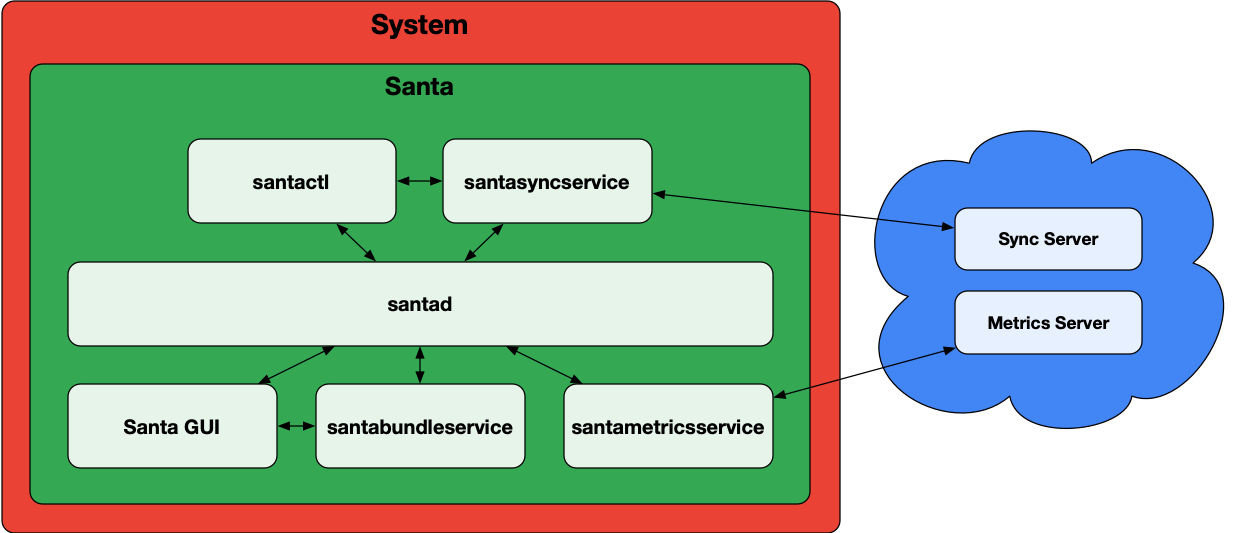Interprocess Communication (IPC)
Most IPC within Santa is done by way of Apple’s XPC. Santa wraps NSXPCConnection to provide client multiplexing, signature validation of connecting clients and forced connection establishment. This is called MOLXPCConnection.
Who starts who?
The primary Santa daemon, santad is a System Extension. It gets submitted as a launchd(8) job by endpointsecurityd(8) via sysextd(8). This happens at system startup or when Santa is installed/upgraded.
The Santa GUI component runs as a launch agent when a user logs into the system. There can be multiple Santa (GUI) processes running, one per user logged into the GUI (assuming fast-user switching is enabled). While multiple processes might be running, only the one for the user currently logged-in will be connected to santad and receiving notifications.
santasyncservice, santabundleservice and santametricservice all run as launch daemons. If a sync server is configured, santasyncservice gets launched when santad starts up and establishes an XPC connection. The santabundleservice starts up when a binary is blocked and the Santa GUI establishes an XPC connection. Note, the santabundleservice also communicates back with santad.
The santametricservice starts when the system comes up. santad opens and maintains an XPC connection to the santametricservice.
santactl is a command-line utility that is executed at will by a user. It can communicate with santad and the santasyncservice via XPC in order to issue commands or collect information.
The santabundleservice process is started by launchd via a connection from the Santa GUI. santabundleservice runs as root, which is necessary to ensure it has permission to read all files.
| Process | Parent Process | Running User |
|---|---|---|
| santad | launchd | root |
| Santa (GUI) | launchd | user |
| santactl | varies | user |
| santasyncservice | launchd | nobody |
| santametricservice | launchd | nobody |
| santabundleservice | launchd | root |
Who communicates with who?
In short, santad has two-way communication with every other process. In addition, Santa and santabundleservice have two-way communication between each other. For other combinations, there is no direct communication.

MOLXPCConnection and two-way communication
MOLXPCConnection enforces a server / client model for XPC connections. This allows for strong signature validation and forced connection establishment. The only problem with this model is the lack of two-way communication. For example, process A can call methods on process B and retrieve a response, but process B cannot call methods on process A.
To accomplish two-way communication, the following approach can be used:
- Process A creates a server with an anonymous
NSXPCListener. - Process A sends the anonymous
NSXPCListenerEndpointto process B over an already establishedMOLXPCConnection. - Process B can now communicate directly with process A.
This is a powerful notion. It enables forced connection establishment between both processes, which is critical when reliability is a concern.